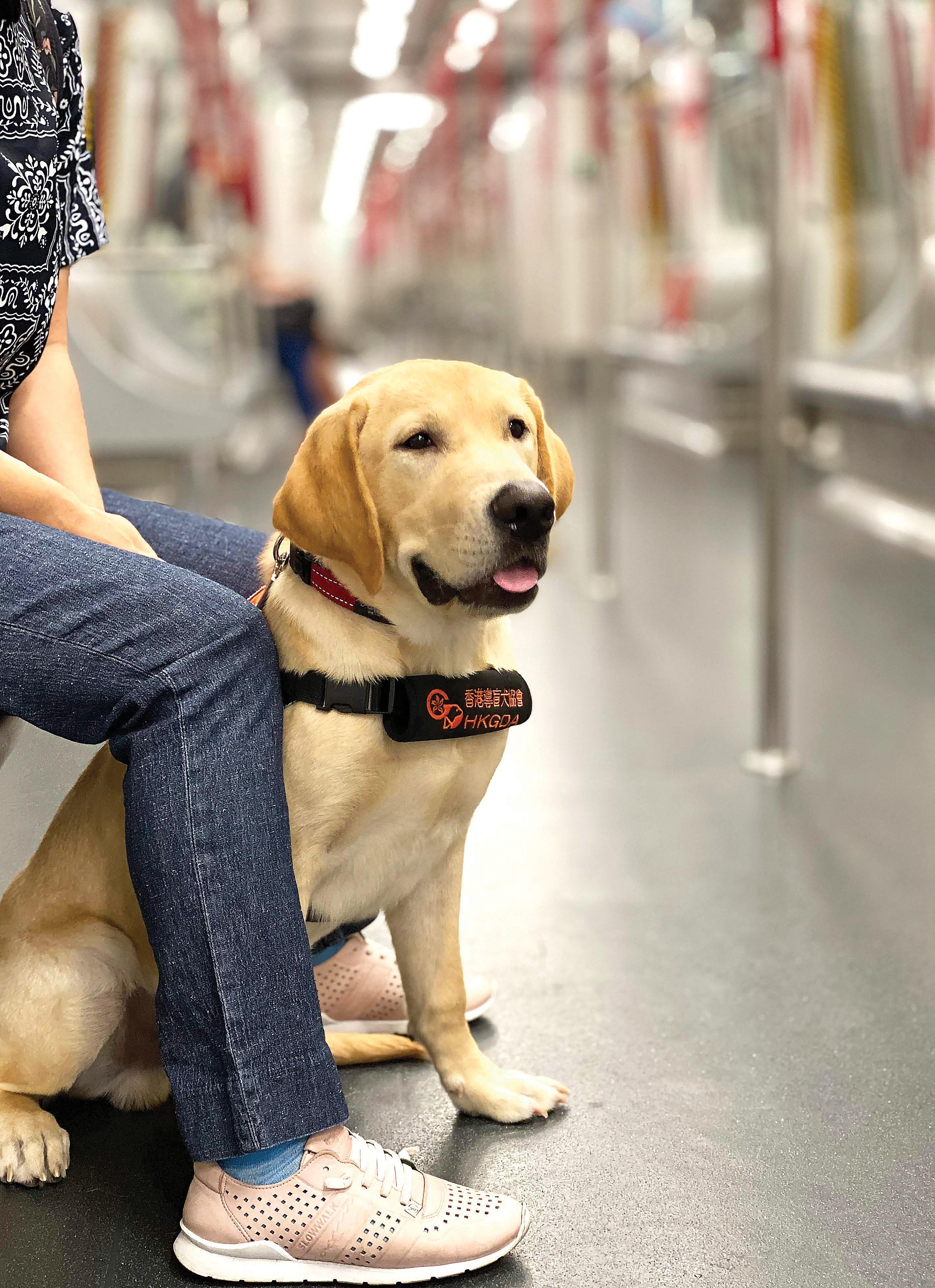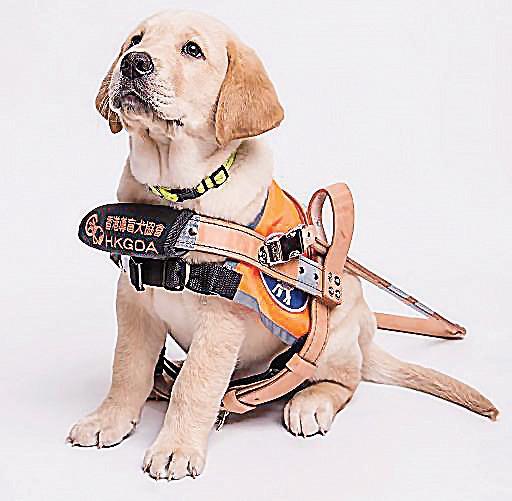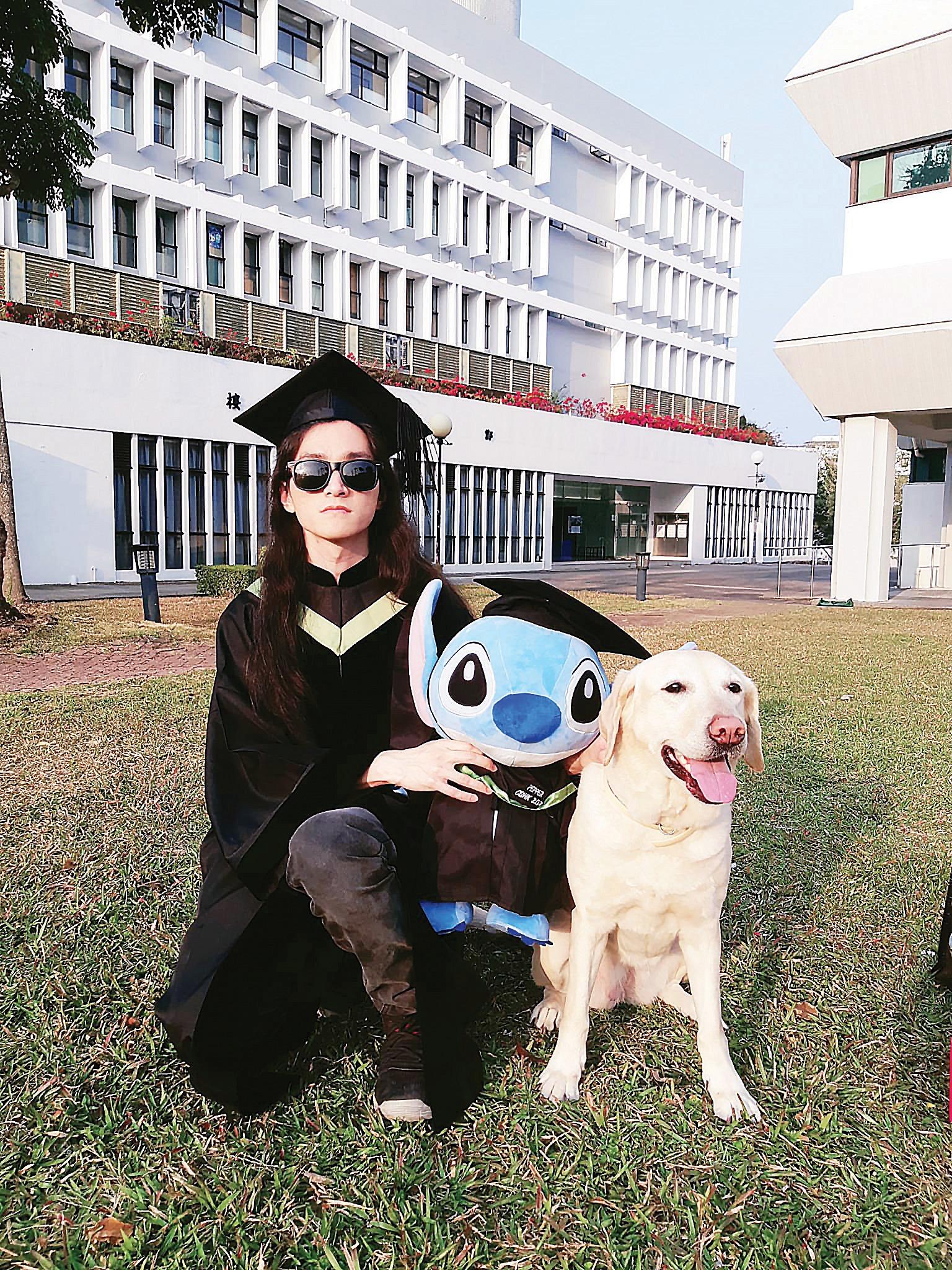While the use of guide dogs hasn’t caught on in Hong Kong just yet, efforts are on to make more of these furry navigators available to those who need them. Faye Bradley reports.
 A guide keeps his user company. (PHOTO PROVIDED TO CHINA DAILY)
A guide keeps his user company. (PHOTO PROVIDED TO CHINA DAILY)
“There’s no such thing as a perfect guide dog or perfect guide dog user — but there is a perfect guide dog partnership,” a trainer once told Curtis Lin, a visually impaired student living in Hong Kong. His guide dog, Pepper, has been helping him get around for four years, while also providing companionship. “I can walk faster, safer, and the sense of security is higher,” Lin says.
Pepper came from the Hong Kong Guide Dogs Association (HKGDA), a registered charitable organization providing internationally accredited, professionally trained service dogs to those in need. The HKGDA also provides Animal-Assisted Intervention (AAI) therapy dogs, designed to support improvements in clients’ physical, social, emotional and cognitive functioning.
According to the Hong Kong Blind Union, around 200,000 of the city’s residents — or 2.7 percent of the population — live with vision impairment. Demand far outstrips supply, as there are only around 50 guide dogs in service.
Under the SAR’s Disability Discrimination Ordinance, guide dogs are allowed to enter all public spaces, including restaurants, supermarkets and public transportation. All successfully paired users and guide dogs — recognized by the HKGDA and provided with photo IDs — are protected by the ordinance. However, HKGDA Chair Jonathan Chow says that there are instances of guide dogs being prevented from entering certain premises or boarding public transportation.
 A dog show hosted by Hong Kong Guide Dogs Association. (PHOTO PROVIDED TO CHINA DAILY)
A dog show hosted by Hong Kong Guide Dogs Association. (PHOTO PROVIDED TO CHINA DAILY)
Learning the ropes
The HKGDA works to raise the profile of guide dogs in Hong Kong. Toward that end, the association shows up with its furry friends at public events, such as the Easter Hat Parade at Victoria Harbour in Fortress Hill, held earlier this month, as well as the O’South Coastal Run charity race in March. Moreover, it is in the process of adapting the former Lau Fau Shan Police Station into a breeding and training center for guide dogs, under the government’s Revitalizing Historic Buildings Through Partnership Scheme.
A local nonprofit, Hong Kong Seeing Eye Dog Services (HKSEDS) also provides guide-dog training, matching and follow-up services. In December, the organization opened the city’s first guide dog training school in Ta Kwu Ling, with the goal of training up 50 dogs in the next three years.
Training a guide dog is a long and complex task. The journey begins at the breeding center. Guide dogs are usually Labradors or goldadors (part golden retriever, part Labrador retriever) — breeds considered more suitable for training. During the first year, puppies are trained and socialized by volunteer foster families. Learning to follow commands and cross roads under professional guidance comes next. That done, each dog is matched with a user with vision impairment, a process that can take several weeks.
According to David Cheung, CEO of HKSEDS, the shortage of volunteers signing up for the puppy-breeder program is owed primarily to Hong Kong’s small living spaces. Often, building managements do not allow pets. Interested parties sometimes draw back, citing lack of time from working long hours at their day jobs.
 The HKGDA training program starts with socializing puppies under care of foster families. (PHOTO PROVIDED TO CHINA DAILY)
The HKGDA training program starts with socializing puppies under care of foster families. (PHOTO PROVIDED TO CHINA DAILY)
Puppy love
Guide-dog matching naturally takes into account each user’s mobility needs. Take, for example, Wing Chee, a 53-year-old mother with vision impairment, who was having difficulty keeping up with her son on the way to school. Chee says her orientation skills have improved since she got her guide dog, Bella. She has learned to focus more on her senses of hearing and smell for better navigation. These days, Chee spends a lot of time playing with and looking after Bella when they are at home. “Bella makes me feel accepted,” she says.
Lin shares that Pepper has been a source of comfort during hard times. “Apart from being a good companion on the street, psychologically, she’s there with me whenever I’m in need,” he says. “I can tell she feels my emotions. It’s something I never expected when I decided to apply for a guide dog.”
Cheung points out that having a dog enhances the owner’s sociability, which in turn can help improve their mental health.
The HKGDA closely monitors guide dogs during the six to 10 years they are active. At least once a year, it runs a health check. The HKSEDS offers a follow-up training program during the first year after user-guide matching to ensure the dog is well looked after. After retirement, guide dogs are often adopted by a former user, or returned to one of their foster families. Cheung mentions that a lot of users forge strong bonds with their guide dogs and are happy to adopt them once they are retired.
Canines that don’t make the grade as guide dogs can become AAI therapy dogs. The HKGDA works with NGOs and other partners to provide therapy dog programs to vulnerable members of society, including children with special needs and elderly people in care homes. For instance, 4-year-old Labrador named Oscar, one of the HKGDA’s star service dogs, helps people with mental health issues.
“Guided by psychiatrists or specialists, patients sit down on the floor with Oscar, stroking or cuddling him, thereby learning to appreciate the world around them,” Chow says.
 Curtis Lin shares a moment from his special day with guide dog Pepper. (PHOTO PROVIDED TO CHINA DAILY)
Curtis Lin shares a moment from his special day with guide dog Pepper. (PHOTO PROVIDED TO CHINA DAILY)
Spare a thought
He would like to correct the common misconception that guide dogs are constantly working. “They have rest time and play time after commuting or arriving at a destination,” Chow says.
Dr David Gething, founder of the online pet store Vetopia, says that it’s important to remember that a guide dog out on the streets with their user is doing a job and shouldn’t be disturbed. Sometimes people want to “pat or play with a guide dog, or even give them a snack, which can hinder them from doing their job properly”, he adds.
Lin wishes people were more sensitive to the presence of canines in their surroundings. On more than one occasion, Pepper lying down in a corner of a busy Hong Kong street has been trodden on by people who could have been more careful.
Mission control
Besides running events and workshops, the HKGDA and HKSEDS both work with corporations to bring their services to Hong Kong’s workplaces.
Earlier this year, Cora Mok — a member of HSBC’s social inclusion team, and a volunteer with the company’s Ability Employee Resource Group — arranged a visit by an HKGDA therapy dog. The aim was to “provide our colleagues with support and guidance with living with disabilities and being a carer”. The session provided a glimpse into the processes of selecting, training and evaluating the performances of therapy dogs, as well as an overview of how canines can support individuals with disabilities, the elderly and children with special educational needs.
“Our aim is to ensure that people with disabilities live with independence and dignity through the right choice of service dog,” says Chow.
Julien Yung Mameaux, regional business director at Moët Hennessy, was so taken by the HKGDA’s vision, he helped organize a fundraising “fashion dogwalk” featuring guide dogs. “There are so many laudable aspects of guide dogs that deserve more awareness and appreciation,” he says.
Cheung, for his part, has big plans for the new HKSEDS training school. “We’re going to be using the school to provide more educational opportunities for the general public, including potential users,” he says, adding that schools and companies will get a chance to tour the facility and observe the guide dogs in training.


